
How do you know if your plants need watering?
I suggest you see together the clues to know if a plant needs water or not.
Because it's not that simple...
And it may be even more difficult in winter than in summer.
One shot, we water them too much, one shot not enough...
As a result, the plants are not always in good shape.
Fortunately, my florist gave me some simple tips to know if green plants need water.
Since I followed his advice to the letter, my plants are doing wonderfully.
Here are 7 effective tips for knowing when to water houseplants . Watch:
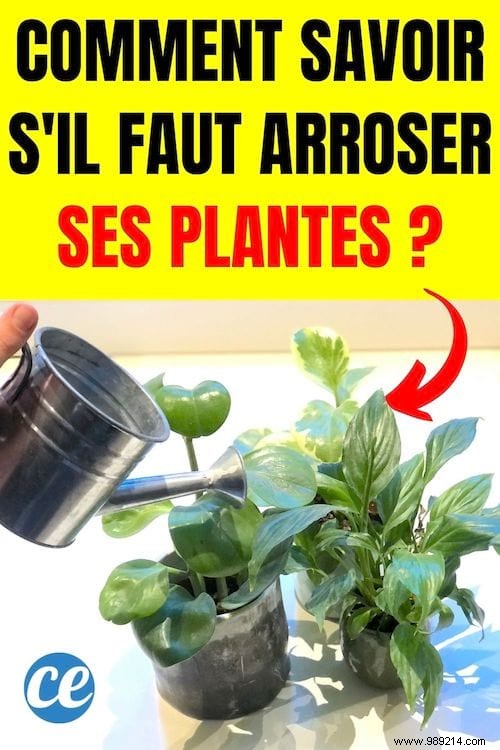
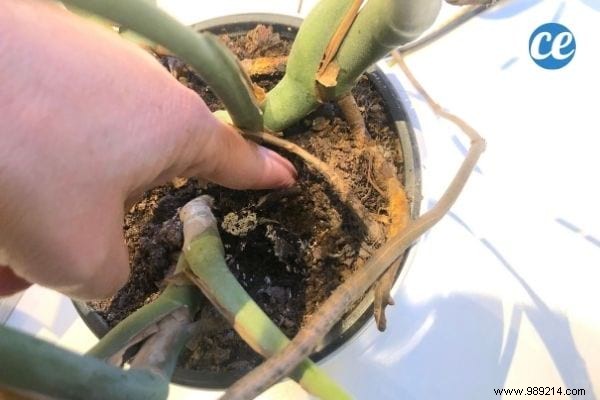
It's one of the best ways to know if your plant needs water or not.
And that's good, because it's also one of the easiest.
What is this technique, you ask?
Poke your finger in the dirt to test the moisture level of the soil. Quite simply.
You will quickly realize if the land is dry or not.
Be careful, as we have seen, the ground can be dry on the surface and wet below.
This is why it is important to push your finger well at least 3 to 4 cm into the ground.
If the soil is completely dry, about 4 cm, it is probably time to water your plant.
This trick is very effective for small potted plants.
But still be careful not to damage the roots when using this technique.
Now let's see what to do if you have a plant in a large pot.
The finger technique may not be very effective, given the depth of the pot.

Yes, it may sound weird...
But by lifting the pots, you can estimate their weight and know whether to water them or not .
If they are heavy, the ground is still full of water. Because the water in the pot adds weight.
If they are light, the ground is dry. It is then necessary to think of watering them.
It's a quick and efficient method, especially if you have a lot of pots at home.
For larger pots, just tilt them a bit to gauge their weight.
This technique improves the more you use it.
Any advice for you to become an expert?
When finished watering, lift the pot to get an idea of its heaviest weight.
This makes it easier to compare its weight after a few days.
If it feels a lot lighter, chances are it needs watering!
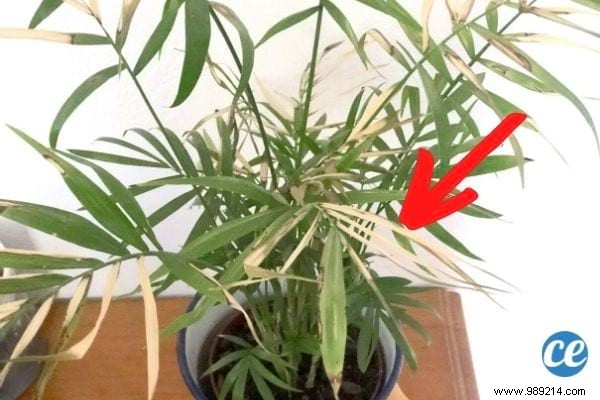
Each plant has specific water needs.
So the best advice we can give is to give them special attention.
Every other day, observe them carefully.
This little routine allows you to note the changes that take place .
What signs should alarm you?
- the leaves are soft and drooping
- the leaves turn yellow or brown
- the leaves dry up
- flowers wither
- the uppers sag
All these changes are clues that lead to one conclusion:your plants are thirsty!
If you notice these changes, you can act quickly by giving them water.
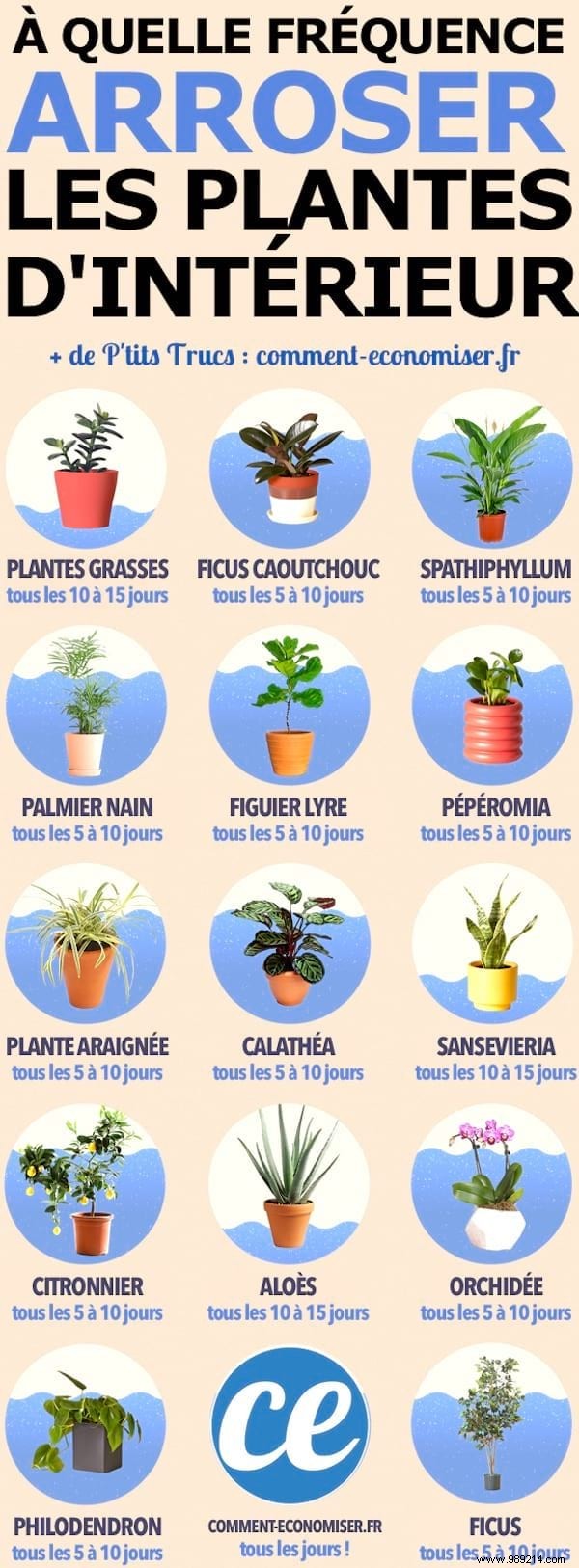
Each plant has specific needs.
Some need to be watered weekly, others every two weeks.
Some species need moist soil, others, on the contrary, prefer dry soil.
Luckily, there's a free and simple guide to find out how often you have to water your plants.
Ficus, aloe vera, orchid... You will know everything about the frequency of watering.
It's a great way to set up a watering routine.
Be aware that in autumn and winter, the frequency of watering of most plants can be reduced.
Indeed, it is the dormant period of plants.
That is, the life cycle of plants slows down. They therefore have less nutritional needs.

Sometimes all you need to do is take a look at the soil of your plants to know if they need to be watered.
You can quickly see if the ground is dry or wet.
Did you know that wet soil is darker than dry soil ?
Concretely, if the soil of your plants is light brown, it means that it is dry.
This is a good clue to know if your plant needs water.
This technique is well suited for plants that need to be in permanent moist soil, such as ferns.
On the other hand, it is less useful for drought-tolerant plants such as cacti, succulents, succulents and ficus.
If you water these plants while the bottom of the pot is still wet, you risk overwatering.
The question is whether the soil is dry at depth.
Wondering how to do it? So there, you have to get your hands dirty!
Yes, you have to test the dryness of the soil with your finger!
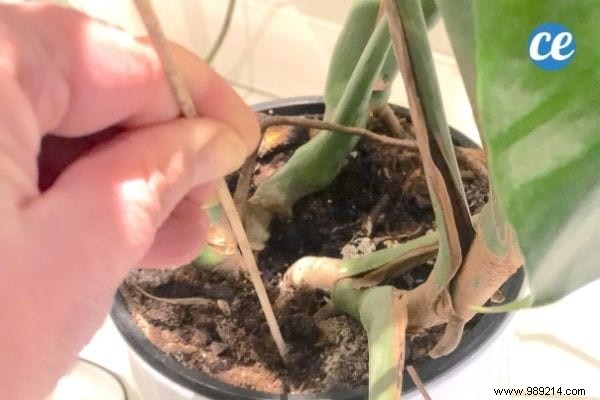
In this case, know that you can use a stick to test the dryness of the soil.
You can take a simple stick, a skewer, an ice cream stick or a Chinese chopstick.
It's also a good way to recycle them after use!
But in any case, the stick should not be stained or treated.
You should insert the stick several inches into the pot, taking care to avoid the roots.
Of course, how deep you drive the stick depends on the size of the pot.
To know how deep you have inserted the stick, make a pen mark on the stick at ground level.
Leave the stick in the ground for 1-2 min, while the moisture soaks into the stick.
Then remove the stick, then read the result.
Here's how:
Look for a damp or wet mark on the stick.
This indicates that the ground is moist from this point.
The look of the wet mark lets you know if your plant needs water.
If the mark is clear, it means that it is not necessary to water.
In this case, repeat the humidity test a few days later.
If the mark is light, it may be time to water your plant.

All these grandma tricks are effective and simple to use.
But you can also use technology using a humidity sensor .
These little hygrometers are inexpensive.
And they make it possible to accurately determine soil moisture.
To do this, simply plant the humidity tester in the soil of the pot.
And the device tests the humidity of the earth and lets you know if it's time to water.